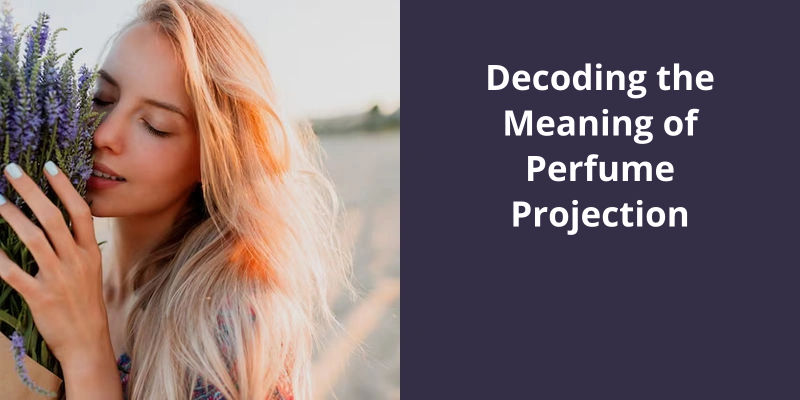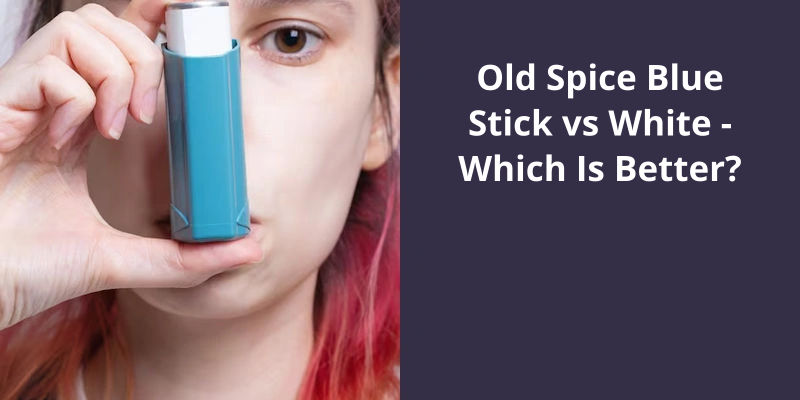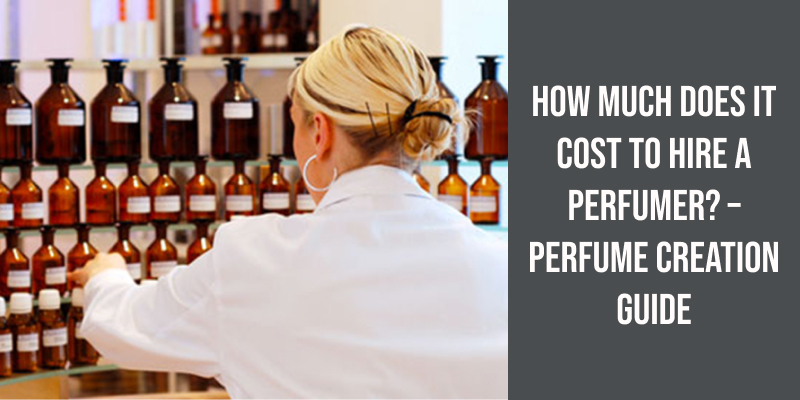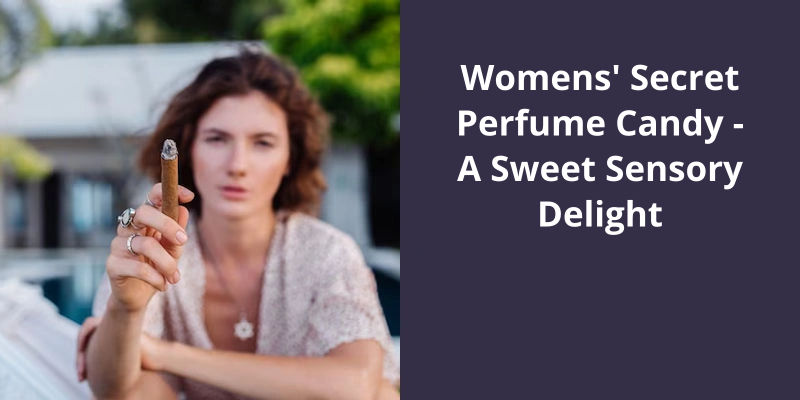Perfume projection refers to how far the scent of perfume can be detected from the wearer. It is related to the strength and longevity of the fragrance: the larger the projection, the stronger and longer-lasting the perfume tends to be. Some perfumes have a small projection, meaning they can only be smelled when you are very close to the person wearing it, while others have a larger projection, meaning the scent can be detected from several feet away. The projection of a perfume can be influenced by a variety of factors, including the concentration of the perfume, the ingredients used in making it, and the natural body chemistry of the wearer.

What Changes the Smell of Perfume?
Additionally, the interaction between the various chemicals in the perfume also affects it’s scent. Some molecules will naturally bond together in the bottle, creating a slightly different fragrance than intended. For example, those with dry skin may find that a perfume dries down faster on their skin, altering the scent.
This can include exposure to light, air, and humidity. Perfumes that are stored in a cool, dark place will typically have a longer shelf life and remain more stable in terms of fragrance. Conversely, heat and sunlight can cause the chemicals in the perfume to break down, altering the scent.
The production process and quality of ingredients used in the perfume also play a role in it’s scent. Perfumes made with natural ingredients may vary in scent due to factors such as weather and harvest, whereas synthetic fragrances can be consistently reproduced. The concentration of the scent also affects it’s intensity and how it evolves over time.
For example, applying perfume to pulse points or after moisturizing can help the scent last longer and develop more fully on the skin.
From the temperature and humidity of the environment to the quality of ingredients used, understanding what affects perfumes scent can help you choose and wear fragrances that work best for you.
The History and Evolution of Perfume-Making Techniques and Styles
Perfume-making techniques have been around for centuries, with the earliest records dating back to ancient Egypt. Over time, different cultures have developed their unique styles, ingredients, and methods of creating fragrances. Today, modern technology has allowed for the creation of synthetic fragrances, but traditional perfume-making techniques using natural ingredients like flowers, herbs, and spices are still used in high-end perfumes. The evolution of perfume-making techniques and styles continues to this day as new fragrances and methods are constantly being developed.
It’s not just the perfume itself that determines it’s projection – several factors related to our individual body chemistry and environment can also play a role. Understanding these factors can help you choose a fragrance that will last longer and project more effectively.
What Affects Perfume Projection?
Firstly, the individuals inherent scent is a significant factor in determining the projection of a fragrance. People have different chemical compositions in their skin, which can react differently to specific perfumes. Some fragrances may project strongly on one person, while the same scent may not have the same effect on someone with different chemistry.
Secondly, the moisture level of the skin can also affect the projection of a perfume. This is because hydrated skin absorbs and holds the fragrance better, allowing it to diffuse more effectively.
Furthermore, the behaviour of the microbiome of the skin can impact the projection of a fragrance.
Another determining factor of perfume projection is the temperature of the skin surface where the fragrance is applied to. Warm skin tends to enhance the projection of a perfume, while cool skin may diminish it. Therefore, applying the fragrance in pulse points, such as the wrists or neck, where the skin is warm can help enhance the projection of the scent.
Highly humid conditions and strong wind can disperse the scent faster, resulting in reduced projection. Additionally, the type of clothing worn can absorb or block the fragrance, thus impacting it’s diffusion.
Understanding these factors can help choose the right fragrance to achieve the desired projection and longevity.
How to Choose a Fragrance That Suits Your Skin Chemistry
- Try out different scents by visiting a fragrance store and testing perfumes on your skin.
- Consider your skin chemistry; some fragrances interact differently with different skin types.
- Note the top, middle, and base notes in a fragrance to determine if it’s the right fit for you.
- Think about the occasion and season for which you’re buying the fragrance. Certain scents are more appropriate for specific times of year or events.
- Take your time when choosing a fragrance; don’t rush your decision as it’s an investment that can last a long time.
In other words, perfume not smelling good on you might not necessarily mean that the fragrance is bad or that your sense of smell is off. There could be various biological and lifestyle factors at play that contribute to your body’s unique reaction to perfume. In the following sections, we’ll explore some of these factors in more detail and offer tips on how to choose and wear perfume that suits you.
Why Doesn’t Perfume Smell Good on Me?
Firstly, it’s important to understand that perfume is a complex mix of various ingredients, including essential oils, synthetic fragrances, and alcohol. These ingredients can react differently with each individuals body chemistry, which could change the scent of the perfume altogether. What may smell amazing on one person may not on another, as the body chemistry plays a vital role in how the perfume reacts with the skin.
Secondly, the pH balance of your skin also plays a significant role in how your skin reacts to the perfume. Perfumes are typically designed to work best on skin that’s slightly acidic, so if your skin is more alkaline, the perfume may not blend well with your natural scent, causing it to smell off.
Thirdly, the amount of natural oils on the skin can also influence the way a perfume smells on an individual. People who’ve oily skin may find that they perceive the scent of the perfume differently than those with dry skin.
Fourthly, hormonal changes such as menstruation or mood swings can also alter how your body reacts to perfume. Furthermore, stress and anxiety can also increase the activity of sweat glands, which can cause the scent of the perfume to disperse faster, making it appear more noticeable and intense.
Lastly, what we eat can also affect our natural scent, which in turn affects perfume. Some foods and drinks, such as coffee, garlic, and onions, can also affect how the perfume smells on our bodies.
Finding the right scent that works well with your body chemistry may take a bit of time and experimenting with different perfumes, nevertheless, when you find the perfect one, it’s undoubtedly a magical experience.
The Different Types of Perfume, Including Eau De Parfum, Eau De Toilette, and Eau De Cologne, and How Their Concentration Can Affect How They Smell on an Individual.
Perfume comes in different types, each with varying concentrations of fragrant ingredients. Eau de parfum has the strongest concentration and typically lasts longer than eau de toilette and eau de cologne, which have less fragrance oils. With less concentration, the fragrance may smell lighter and less overpowering, making it suitable for daily use. How it smells on an individual depends on one’s skin chemistry and body temperature.
Understanding the composition of a fragrance can give a unique insight into the scent, helping to identify the key notes and how they interact with one another. While there are many ways to analyze a fragrance, gas chromatography (GC) has proven to be an effective method for separating, identifying, and quantifying the various components that make up a scent. Through this process, perfumers are able to create fragrances that aren’t only pleasing to the nose, but also scientifically balanced.
How Do You Analyze a Fragrance?
Perfume analysts use GC to analyze the composition of a fragrance by first separating each of it’s components. Perfumes are made up of multiple components such as essential oils, fixatives, and aroma chemicals. Each component of a fragrance might have a different molecular structure, and thus, the separation is necessary to isolate the individual chemicals.
Before gas chromatography, fragrance analysis was impossible since the chemicals couldn’t be separated without being destroyed. In a typical GC, a small amount of the fragrance is injected into a long coil which contains a stationary phase coated onto a thin layer of support.
The carrier gas pushes the fragrance through this column, and as the various chemicals pass through it, they’re separated based on their boiling points and molecular weight. The separated chemicals are then detected by a detector which measures the amount of each chemical in the sample.
The output data from a GC analysis is usually displayed as a chart known as a chromatogram. The chart plots the compound’s retention time (RT) against the detector response. The RT is the time required for each component to move through the column while the detector response represents the number of molecules detected. With the output data, analysts can identify and quantify the chemical components of a fragrance.
Analysts can compare the GC data of different fragrances to identify similarities and differences. They can also compare the length and shape of GC peaks to differentiate between natural and synthetic chemicals.
It’s a precise and accurate method that helps perfumers to create unique and high-end fragrances that cater to varied tastes and preferences.
While there are many pulse points that are commonly used for applying perfume, some areas may be more effective for projection than others. To ensure a well-balanced projection sphere, it’s important to target specific areas such as the shoulder joints, nape, and base of the throat. In this article, we’ll explore where to apply perfume for optimal projection and longevity.
Where Do You Put Perfume for Projection?
When it comes to wearing perfume or cologne, finding the right spot to apply your fragrance can make a huge difference in how it smells and how long it lasts on your skin. Many people believe that the neck, wrists, and behind the ears are the best places to apply fragrance due to being pulse points, areas where the blood vessels are close to the skin’s surface. While these areas can work well for certain perfumes, there are other spots on the body that may provide better projection and longevity.
One popular area for perfume application is behind the ears. This spot is a pulse point and releases heat, which can help to work with the fragrance and project the scent. It’s important to spray lightly on this area as it’s near the face and can easily become overpowering.
The base of the throat is another great area for perfume application as it’s a main pulse point and acts as a diffusion centre for perfume. Care should be taken when spraying the area as this spot can easily become overpowering.
This area can create a subtle yet distinct aroma and can be a great spot for fragrances that arent too overpowering.
The chest is another great spot for perfume application. It releases heat, just like the neck, and the fragrance can be easily smelt from this spot. It’s important to remember that a little goes a long way; too much fragrance can easily overwhelm the senses.
Finally, the shoulder joints are another excellent spot for perfume application as they’ve a natural curve that’s perfect for fragrance application. The amount of fragrance needed at this spot is minimal as it’s positioned quite close to the nose and the fragrance can be strong when too much is applied.
How to Choose the Right Type of Perfume for Different Occasions
- Daytime events: For a daytime event, choose a light and fresh scent such as citrus or floral. This will keep you feeling fresh and can enhance your mood throughout the day.
- Office or professional settings: Opt for a subtle and classic scent such as lavender or musk. Avoid wearing anything too overpowering or distracting in a professional environment.
- Evening events: Choose a more bold and sensual scent such as vanilla or amber. This will add an air of sophistication and sexiness to your evening look.
- Outdoor activities: When choosing a scent for outdoor activities, consider opting for something that’s more natural and earthy such as sandalwood or pine. These scents will complement the natural environment around you.
- Special occasions: For special occasions such as weddings or parties, choose a fragrance that’s luxurious and indulgent such as jasmine or rose. This will add an element of glamour to your overall look.
But the quality of a perfume isn’t solely determined by it’s concentration and fragrance category. There are various other factors that play a crucial role in making a perfume stand out and become a beloved scent in the world of fragrances. Let’s explore them in more detail.
What Determines the Quality of a Perfume?
The top notes are the initial scents that are experienced when one applies the fragrance. These can be fruity or citrusy, and they typically fade away within 15-30 minutes. These can include floral, spicy, or earthy scents, and they usually last for a few hours. Finally, the base notes are the foundation of the fragrance, and they’re responsible for it’s longevity. These are typically woody, musky, or vanilla scents and can persist for up to 24 hours.
Another factor that affects the quality of a perfume is the quality of the ingredients used to make it. Essential oils used in fine fragrances are usually sourced from natural materials such as flowers, spices, or fruits. Synthetic materials can also be used, but they aren’t considered to be of the same caliber as natural essential oils. The age of the ingredients also plays a role in the fragrances quality.
Some perfumes undergo distillation or extraction to obtain their essential oils, while others are made through a maceration process. The quality of the production process can vary widely, affecting the scents integrity, consistency, and any added preservatives.
Finally, the brand image and reputation can influence the quality of a perfume. Well-known perfume houses have a reputation for producing high-quality and sophisticated fragrances. Consumers often invest in these fragrances because they perceive them to be of superior quality. Many high-end brands have strict quality control measures and use only the finest ingredients to maintain their reputation.
When all these factors are of high quality, a fragrance becomes a timeless masterpiece that people will continue to enjoy for years to come.
Conclusion
It’s what allows a perfume to announce itself before it’s wearer even enters a room and sets the tone for the entire olfactory experience. Understanding the concept of projection can be the key to finding your signature scent or designing a fragrance that truly captures your unique essence. With this knowledge, you can make informed choices about the perfumes you wear and how you choose to wear them, creating a sensory experience that’s truly unforgettable.





